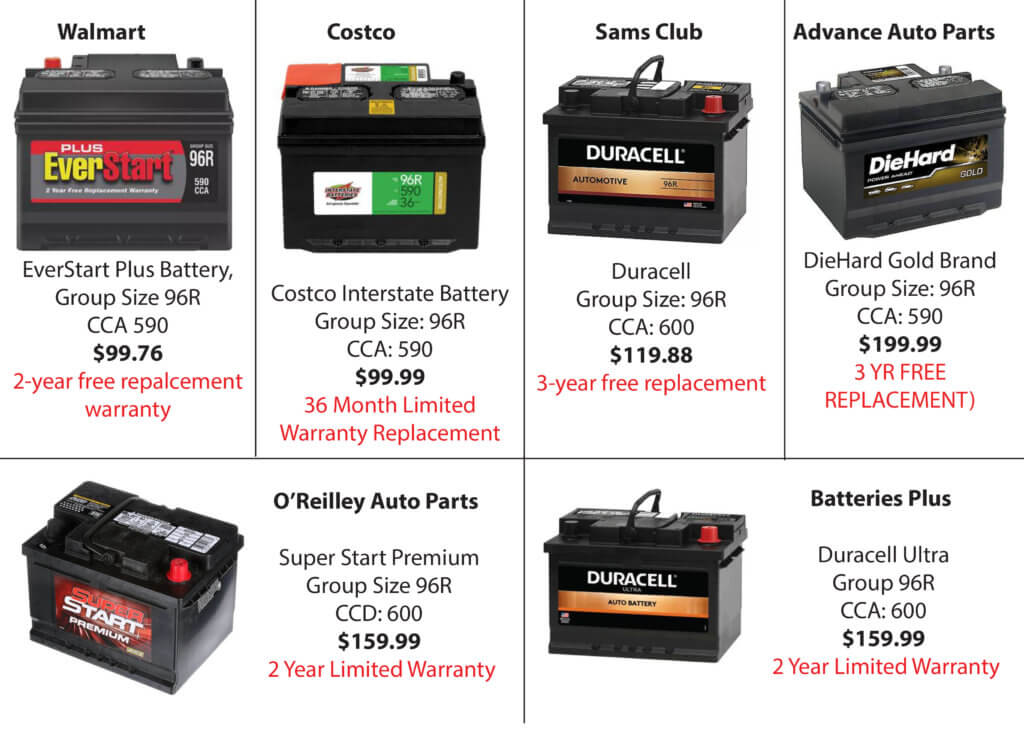How to buy a replacement car battery
Car battery replacement buying guide
What you need to know when buying a car battery replacement
Car batteries are arranged by “group size.” A particular group size defines the height, width, and depth of the battery, as well as the location and type of the posts or battery cable connections.
Find your car battery group size
Interstate Battery has a group finder feature. Click here to find the group sizes that fit your vehicle.
Determine the cold cranking amps
Find the recommended cold cranking amps specification in your owner’s manual. It’s usually listed in the vehicle specifications section. If there’s no listing for cold cranking amps, check for a CCA listing on your current battery.
Where to buy a car battery
Find the cheapest car batteries at big box stores and wholesale clubs
You’ll often find the lowest car battery replacement prices at Costco, Sam’s Club, and Walmart. In most cases, they’ll install the battery for you. But check out the warranty terms. Some stores like Costco offer incredibly strong warranties. For example Costco car batteries have a 3-year warranty with over the counter exchange and no pro-rating. Other stores offer a 1-year over the counter warranty and then pro-rate the remainder of the warranty.
Where not to buy a car battery
I conducted a price and warranty survey on 3/30/2022 for a 96R group size traditional flooded battery.
Costco has the lowest price ($99.99) and a 36-month warranty
Sams Club was a bit higher priced at $119.88 but also offered a 36-month warranty
WalMart has a low price, but also a short 24-month warranty.
O’Reilly Auto Parts and Batteries Plus had higher prices and shorter warranties (24-month) compared to Sam’s Club and Costco
Advance Auto Parts had the highest price at $199.99 with a 36-month warranty

What car replacement battery brand is best?
Battery brand is irrelevant. In the U.S. there are only three car battery manufacturers. They make all the brands you see in the stores. In fact, most of the battery brands you see are the same battery with a different label plastered on the front.
What should you look for in a car replacement battery?
Simple. Warranty and price.
©, 2022 Rick Muscoplat
Posted on by Rick Muscoplat